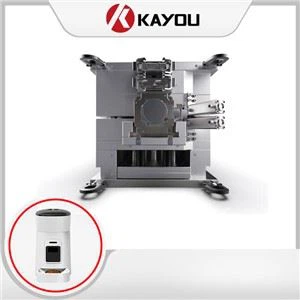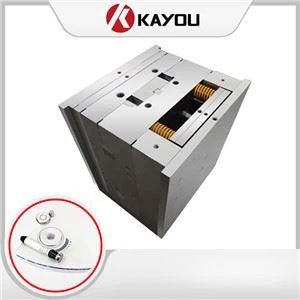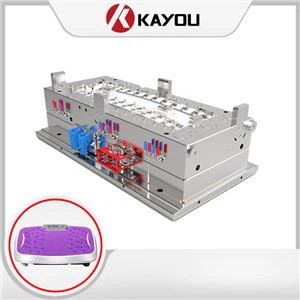How to reduce defects in plastic mold processing
1. Reasonably use cooling lubricating fluid to play the three roles of cooling, cleaning and lubrication, keep cooling and lubrication clean, control the grinding heat within the allowable range, and prevent thermal deformation of the workpiece. Improve the cooling conditions during grinding, such as oil-immersed grinding wheels or internally cooled grinding wheels. The cutting fluid is introduced into the center of the grinding tool, and the cutting fluid can directly enter the grinding area, which has an effective cooling effect and prevents burns on the surface of the workpiece.
2. Reduce the quenching stress after heat treatment to a minimum. Under the action of the grinding force, the quenching stress and the network carbonized structure will change the structure and easily cause the workpiece to crack. In order to eliminate the residual stress of grinding, high-precision molds should be treated with low temperature aging after grinding to improve toughness.
3. Eliminate grinding stress, soak in a salt bath at 260~315℃ for 1.5min, and cool in 30℃ oil, the hardness will drop by 1HRC, and the residual stress will drop by 40%~65%.
4. For precision grinding of precision molds whose dimensional tolerance does not exceed 0.01mm, attention should be paid to the influence of ambient temperature and constant temperature grinding is required. According to calculations, when the temperature difference of 300 mm long steel is 3℃, the material will have a change of about 10.8μm (10.8=1.2×3×3, the deformation per 100mm is 1.2μm/℃), and each processing process needs Fully consider the influence of this factor.
5. Electrolytic grinding is used to improve mold manufacturing accuracy and surface quality. During electrolytic grinding, the grinding wheel removes the oxide film: it is not grinding metal, so the grinding force is small, the grinding heat is also small, and there will be no grinding burrs, cracks, burns, etc. The general surface roughness is better than Ra0.16μm, In addition, the grinding configuration of the grinding wheel is small, such as the grinding of cemented carbide. The grinding amount of the silicon carbide grinding wheel is about 400% to 600% of the weight of the grinding cemented carbide. During electrolytic grinding, the grinding amount of the grinding wheel is only hard. 50%~100% of the grinding volume of high-quality alloys.







